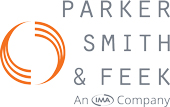Employer Reporting – HRA Reporting Requirement
September 3, 2015
In the recent draft instructions released by the IRS in regards to employer reporting on Forms 1094 and 1095, the IRS indicates that reporting is required for health reimbursement accounts (HRAs) integrated with fully-insured plans. This comes as a bit of a surprise to many who assumed that HRAs integrated with a major medical plan, regardless of funding method, would be considered “supplemental coverage” and not require any reporting. This guidance affects reporting requirements for both small employers and applicable large employers offering HRAs integrated with a fully-insured medical plan.
Background
Beginning in 2016, the ACA requires employers and insurance companies to report certain plan and coverage information to the IRS on Forms 1095 and 1094. Section 6055 of the Code requires reporting of coverage-related information for individuals enrolled in a minimum essential coverage plan. This portion of the reporting will be completed either on Part III of Form 1095-C, or in some cases, with an alternative Form 1095-B. For fully-insured coverage, the 6055 reporting will be handled by the insurance carrier, but for self-funded coverage, this portion of the reporting is the responsibility of the plan sponsor (typically the employer). More information on the 6055 reporting requirements are contained in the IRS FAQ, which can be found here. Note that applicable large employers are also responsible for the 6056 reporting on offer of coverage information. Employers use different sections and types of Form 1095 to report both Section 6055 and 6056 information depending on the requirements that apply to that particular employer.
Reporting Required for HRAs Integrated with a Fully-insured Health Plan
“Minimum essential coverage” includes most self-funded group health plans, but does not include excepted benefits (such as stand-alone dental or vision coverage). Reporting is also not required when the self-funded plan is considered a supplemental benefit. In the draft instructions for Form 1094-B and 1095-B (the “B” forms), the IRS states that HRAs integrated with a fully-insured plan are not treated as supplemental coverage. According to the new IRS instructions, the supplemental benefit exception applies only when the primary and supplemental coverages have the same plan sponsor and the same reporting entity.
Due to this IRS interpretation, an employer who offers an HRA integrated with a self-funded medical plan is not required to report on the HRA coverage because both plans are offered by the same plan sponsor and the employer is the reporting entity for both plans. However, in the case of an HRA integrated with a fully-insured plan, the reporting entities are different. The insurance company is the reporting entity for Section 6055 information related to the fully-insured plan and will be sending employees covered by the plan a Form 1095-B. But the employer is the reporting entity for the HRA and, according to this guidance, must report Section 6055 information for the HRA. See excerpt from draft instructions for the “B” forms below:
Supplemental Coverage – Providers aren’t required to report the following minimum essential coverage that is supplemental to other minimum essential coverage.
- Coverage that supplements a government-sponsored program, such as Medicare or TRICARE supplemental coverage
- Coverage of an individual in more than one plan or program provided by the same plan sponsor (the plan sponsor is required to report only one type of minimum essential coverage).
Coverage isn’t provided by the same plan sponsor if they aren’t reported by the same reporting entity. Thus, an insured group health plan and a self-insured health reimbursement arrangement covering the employees of the same employer aren’t supplemental.
Reporting Requirements Differ for Large and Small Employers
As mentioned above, employers offering an HRA integrated with a self-funded medical plan will not have to worry about reporting specifically on the HRA; however, employers offering an HRA that is integrated with a fully-insured medical plan must generally report as follows:
- Small Employers – For small employers, employers with less than 50 full-time equivalents (FTEs), who offer a fully-insured medical plan and a self-funded HRA, reporting will be required on the “B” forms for any individuals covered under the HRA (including dependents).
- The “B” forms are much simpler than the “C” forms, generally requiring only basic employer contact information and the name, SSN and coverage months for any individuals covered under the self-funded plan.
- Covered individuals will receive a Form 1095-B from the insurance carrier for the fully-insured medical coverage and a second Form 1095-B from the employer for the self-funded HRA coverage.
- Applicable Large Employers (ALEs) – For employers with 50 or more FTEs (ALEs) who offer a fully-insured medical plan and a self-funded HRA, reporting will be required in Part III of Form 1095-C for any employees and their dependents covered under the HRA and either Part III of Form 1095-C or Form 1095-B (at the employer’s discretion) for any non-employees and their dependents covered under the HRA.
- Full-time employees will receive a Form 1095-C with Parts I and II completed from the employer regardless of whether they are covered under the employer-sponsored plan. If they are covered under the medical plan and HRA, Part III of Form 1095-C will be completed indicating coverage under the HRA and the employee will also receive a Form 1095-B from the insurance carrier for the fully-insured medical coverage.
- Non-employees covered under the medical plan and HRA will receive a Form 1095-B from the insurance carrier for the fully-insured medical coverage and either a second Form 1095-B or a Form 1095-C from the employer for the self-funded HRA coverage.
Note, reporting is also required for HRAs (other than those which provide coverage solely for excepted benefits) that are not integrated with a major medical plan such as a retiree-only HRA.
Summary
The clarifications on HRA coverage reporting provided in the draft instructions now means that small employers that originally assumed no reporting was required must report using the “B” forms early in 2016 for the 2015 calendar year. It also means additional reporting requirements for applicable large employers who planned to complete only Parts I and II of Form 1095-C. These instructions are draft only, but we do not expect to see any significant changes in the final instructions.
For the most part, employers will easily be able report information as to which individuals are covered under the plan, however some may struggle to obtain information (including names and SSNs) of covered dependents. Hopefully some coordination with the insurance carrier, who is also required to report this information for the fully-insured coverage, or the vendor who administers the HRA plan, will help to alleviate some of the administrative burden.
Below are links to the “B” and “C” draft forms and instructions:
- Form 1094-C and 1095-C Links:
- Draft Form 1094-C can be found here
- Draft Form 1095-C can be found here
- 2015 draft instructions can be found here
- Form 1094-B and 1095-B Links:
- Draft Form 1094-B can be found here
- Draft Form 1095-B can be found here
- 2015 draft instructions can be found here
As always, should you have any questions, please contact your Parker, Smith & Feek Benefits Team.
We strive for the most accurate and up-to-date information. Neither the publisher nor the author can accept liability for any inaccuracies or changed circumstances of any information herein or for the consequences of any reliance placed upon it. This publication is distributed on the Understanding that the publisher is not engaged in rendering legal, accounting or other professional advice or services. Readers should always seek professional advice before entering into any commitments.
The views and opinions expressed within are those of the author(s) and do not necessarily reflect the official policy or position of Parker, Smith & Feek. While every effort has been taken in compiling this information to ensure that its contents are totally accurate, neither the publisher nor the author can accept liability for any inaccuracies or changed circumstances of any information herein or for the consequences of any reliance placed upon it.



